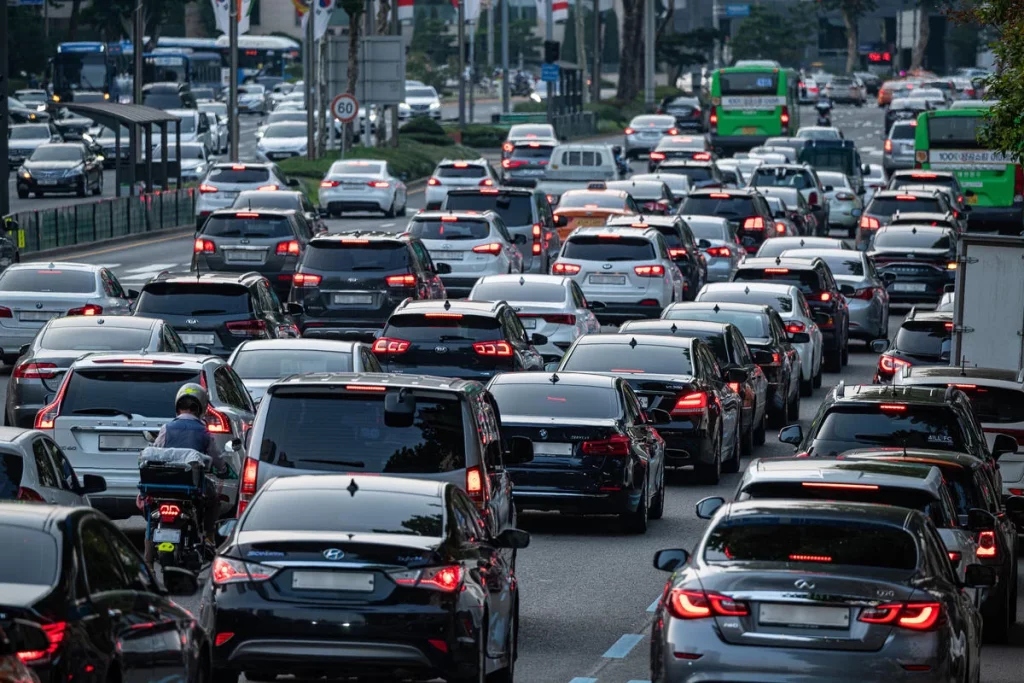As urbanization continues to rise, the environmental challenges posed by air pollution have become increasingly urgent. Among the many sources of pollution, road transport, particularly internal combustion engine (ICE) vehicles, stands out as one of the most significant contributors. These vehicles are responsible for emitting harmful pollutants such as carbon monoxide, nitrogen oxides (NOx), and particulate matter (PM), all of which degrade air quality and harm public health.
In the face of this challenge, electric vehicles (EVs) have been hailed as a potential solution to urban air pollution. With the ability to produce zero tailpipe emissions, EVs promise to transform the way cities deal with air quality, especially in highly polluted metropolitan areas.
But can electrification truly be the key to tackling the problem? Could a future of “smokeless” cities be within reach? In this article, we will explore how EVs can contribute to solving air pollution and whether cities can realistically achieve a cleaner, healthier future through electrification.
1. The Impact of Air Pollution from Traditional Vehicles
Before we delve into the potential of EVs, it’s essential to understand just how much traditional gasoline and diesel-powered vehicles contribute to air pollution in cities around the world.
Pollution from Internal Combustion Engine Vehicles
- Carbon Dioxide (CO2): While CO2 is the most widely discussed greenhouse gas responsible for climate change, it also contributes indirectly to air pollution. When large amounts of CO2 are emitted, it can worsen conditions like urban smog by reacting with other pollutants in the atmosphere.
- Nitrogen Oxides (NOx): NOx is a major pollutant produced by burning fossil fuels. It reacts in the atmosphere to create ground-level ozone, a key ingredient in smog. High levels of NOx are also linked to respiratory problems, including asthma and bronchitis.
- Particulate Matter (PM): PM consists of tiny particles, including soot, dust, and diesel exhaust, which can enter the lungs and bloodstream, causing serious health issues such as heart disease, lung cancer, and premature death. Diesel-powered vehicles are particularly notorious for their emissions of fine particulate matter.
In many of the world’s most polluted cities, road traffic is one of the largest contributors to poor air quality, particularly during rush hour. According to the World Health Organization (WHO), air pollution from vehicles is responsible for millions of deaths annually, with the majority of these occurring in urban areas.
Urbanization and the Growth of Vehicle Numbers
With urban populations swelling and the number of vehicles on the road continuing to grow, pollution levels in cities are reaching critical thresholds. The demand for cleaner air has prompted governments, cities, and citizens to take action in the form of regulations and initiatives designed to reduce emissions from the transport sector.
2. The Role of Electric Vehicles in Combating Air Pollution
Zero Emissions from EVs
The most immediate and obvious benefit of electric vehicles is that they produce zero tailpipe emissions. Unlike internal combustion engine (ICE) vehicles, EVs don’t emit harmful pollutants like CO2, NOx, or PM while in operation. This makes them a powerful tool in the battle against urban air pollution.
- Cleaner cities: By replacing ICE vehicles with EVs, cities can significantly reduce the concentration of pollutants in the air, particularly in high-traffic areas such as city centers, main roads, and downtown districts.
- Direct reduction in harmful emissions: Studies have shown that EVs can reduce NOx and particulate matter emissions from the transport sector by up to 90% compared to conventional vehicles. In congested urban areas, where tailpipe emissions from vehicles are the primary cause of air pollution, EV adoption could have a profound impact on improving air quality.
EVs in Public Transport and Delivery Fleets
Electric vehicles are not limited to personal cars; they can also play a significant role in public transport and commercial fleets. Electric buses, trucks, and delivery vehicles can help reduce pollution from some of the largest polluters in urban environments.
- Electric buses: Cities like Shenzhen in China have already transitioned their entire bus fleets to electric, greatly improving air quality. Electric buses can help significantly reduce emissions in areas with high traffic volumes, particularly in city centers, where air pollution tends to be the worst.
- Delivery fleets: With the rise of e-commerce, delivery vehicles, often operating in urban areas, have become a major source of air pollution. Many delivery services, including companies like Amazon and UPS, are beginning to roll out electric delivery vans to reduce their environmental footprint.
The adoption of electric public transportation and commercial vehicles alongside personal EVs can have a multiplier effect, resulting in cleaner air and less congestion.
Impact of EVs on Smog and Ozone Levels
One of the most dangerous pollutants in urban environments is ground-level ozone, which forms when pollutants like NOx and volatile organic compounds (VOCs) react in the presence of sunlight. Electric vehicles, by eliminating NOx emissions, can directly help reduce the formation of ozone smog and lower concentrations of this harmful air pollutant.
Cities like Los Angeles and Beijing, which have struggled with smog for decades, stand to benefit from the widespread adoption of EVs, as ozone pollution is one of their most pressing environmental challenges.

3. The Future of “Smokeless” Cities: Can EVs Truly Clean the Air?
While the adoption of electric vehicles will undoubtedly lead to a significant reduction in air pollution, there are a few important considerations to take into account.
The Importance of Clean Energy for EV Charging
Although EVs produce zero tailpipe emissions, the environmental benefits of electrification depend on the source of electricity used to charge the vehicles. In regions where fossil fuels dominate the electricity grid, the overall carbon footprint of EVs can still be relatively high, even though the vehicles themselves don’t emit pollutants.
- Renewable energy: For EVs to contribute to a truly smokeless future, cities must focus on greening the grid. The greater the share of renewable energy sources—such as solar, wind, and hydropower—on the grid, the cleaner the overall lifecycle of electric vehicles becomes.
- Energy storage and grid efficiency: Additionally, integrating energy storage solutions and improving grid infrastructure will be necessary to support the rising demand for EV charging, especially during peak hours. Smart grid technologies and vehicle-to-grid (V2G) systems can also help optimize energy use, reducing the carbon footprint of both EVs and their charging infrastructure.
Beyond EVs: A Comprehensive Approach to Urban Air Quality
While electric vehicles are a vital component of reducing air pollution, a truly smokeless future for cities will require a broader approach that includes:
- Active transport: Encouraging walking, cycling, and the use of shared mobility services like electric scooters will reduce the number of vehicles on the road, decreasing congestion and emissions.
- Public transportation investment: Expanding and electrifying public transport networks can reduce the need for personal vehicle use, further decreasing the demand for fossil fuels and reducing traffic-related pollution.
- Urban planning: Cities should consider designing urban spaces that promote sustainability, with better access to public transit, green spaces, and pedestrian-friendly areas. Compact, well-planned cities will reduce the reliance on cars altogether.
Global Examples: Cities Leading the Charge
Some cities are already leading the way in electrification, showcasing what a cleaner, more sustainable future could look like. Here are a few noteworthy examples:
- Shenzhen, China: This city has already transitioned its entire bus fleet to electric vehicles, setting a global precedent for clean public transport.
- Oslo, Norway: With over 50% of all new car sales being electric, Oslo is rapidly becoming one of the world’s most electrified cities, dramatically improving air quality and reducing emissions.
- Amsterdam, Netherlands: Known for its commitment to sustainability, Amsterdam is aggressively pushing for an all-electric future, investing heavily in EV infrastructure and reducing emissions from both public and private transport.
4. Conclusion: A Cleaner, Healthier Future is Possible
Electric vehicles hold the potential to drastically reduce urban air pollution by eliminating the tailpipe emissions of conventional cars. The widespread adoption of EVs, alongside the transition to clean energy grids, public transportation expansion, and smart urban planning, could lead to a “smokeless” future for cities worldwide.
However, this transition will require more than just replacing internal combustion engine vehicles with electric ones. It will require collaborative efforts from governments, urban planners, businesses, and consumers to create an ecosystem that supports clean mobility and a greener environment.
With the right policies in place, cities can look forward to cleaner air, healthier populations, and a sustainable future—one where electric vehicles play a crucial role in creating a world free of smoke and pollution.











































